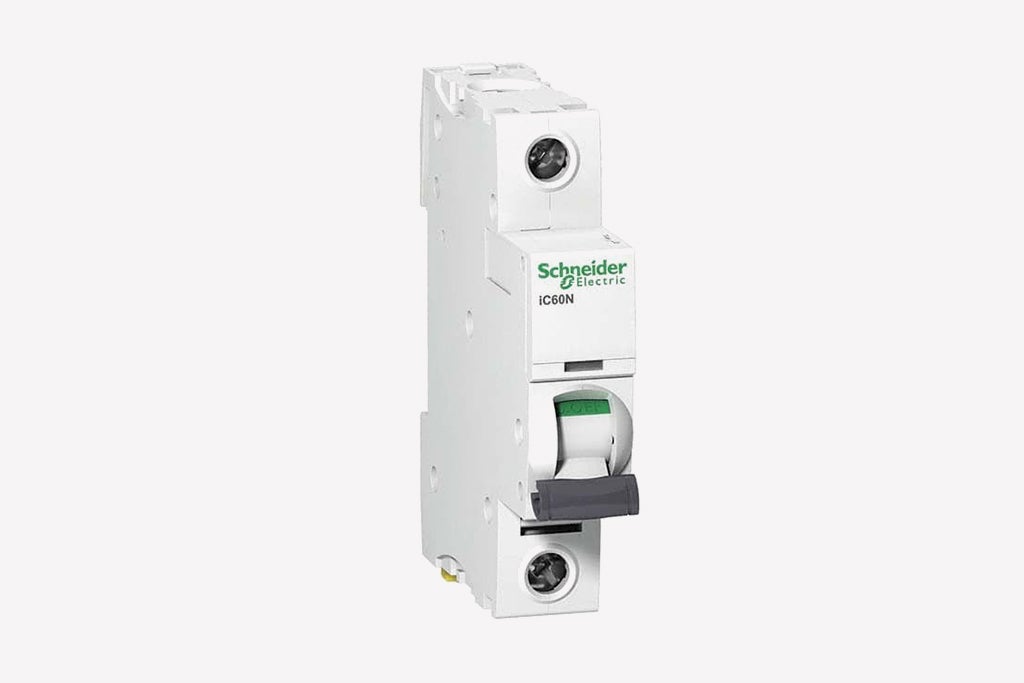MCB (Miniature Circuit Breakers) Guide - Types, Sizes, and Uses
What Are MCBs?
Short circuits are a term you have heard of, but have you ever wondered what happens if there is a power surge? Your devices will malfunction and even get permanently damaged. Now power surges are fairly common, so why do by our devices remain safe? The reason is a simple electro-mechanical device known as a Miniature Circuit Breaker (MCB).
MCBs are automatic switches that automatically turn off the power supply when it detects a power surge. Earlier, this action used to be done by fuses. Though fuses have one disadvantage, they need to be replaced every time there is a short circuit. An MCB, on the other hand, can be manually restarted and is more durable.
Types of MCB
MCBs are installed in spaces depending on the need of the appliance. Hence, you will find multiple MCB types that can be used for a range of purposes. The most popular MCB types are A, B, C, D, K and Z. Of these, the most commonly used are B, C and D. These categories are often based on their trip curve or tripping capacities.
Type B - These are often used in residential properties or industrial units with small scale of operations. In such MCBs, the trip occurs when the power exceeds 5 times more than the suggested limit. These MCBs are considered to be the most sensitive owing to their lower tolerance for voltage shifts. Since, current surges and fluctuations are less intense in residential spaces, it’s mostly used in such areas.
Type C - These MCBs often trip at surges that exceed 10 times the power capacity. So these are strategically used in devices which have high power consumption requirements. Often you will find Type C MCBs in commercial and industrial units. Electrical motors and fluorescent lighting are electrical accessories where Type C MCBs are used. They offer higher protection in comparison to type B MCBs and have a higher capacity to handle surges.
Type D - Considered to be the least sensitive MCB type, the Type D has a surge capacity of 10 to 20 times higher than the power threshold. Often these are used in devices such as X-ray machines, motors and other equipment that has higher rush of power. Such expensive appliances often need added protection from fluctuations in voltage and power surges and hence these need a high capacity and robust MCB.
Read More: How Does The Mcb Protect Your Home?
Uses of MCB
Electrical panels - MCBs are installed in electrical panels to ensure there is a uniform distribution of power to all devices. An MCB also limits power fluctuations, thus ensuring less damage to equipments.
Lighting Systems - Our homes are dominated by a wide range of lights. All these lights are in use for large parts of the day. This makes it essential to install an MCB via which effective distribution of power is made possible. Certain lights need more power than others, and MCBs can regulate accordingly and offer unique lightening systems the safety they need. This safeguarding of bulbs with MCBs ensures the longevity of bulbs.
Industrial equipment and application - Industrial appliances have a heavy duty power consumption and require up to 30 kA of power supply. In addition, these appliances are expensive. Hence, MCBs maintain a constant power flow in these equipment’s. Often MCBS are installed in supermarkets, hotels and malls.
Ground Fault Trip Mechanism - Electrical wires embedded in the earth can come in contact with transmitter surfaces. This can cause an increase in current flow in the entire circuit system. Installing a ground fault trip mechanism like an MCB helps regulate such mishaps by shutting out the power supply.
MCBs by Schneider Electric
The importance of MCBs cannot be contested. These small but powerful devices protect multiple devices in our homes and commercial spaces. With such multi-purposes utility, it’s essential that your MCB be of high quality and durability. Schneider Electric offers such MCBs in a wide range of types and sizes. The renowned electrical appliance brand offers the best MCBs in the market with added protection and guarantee of durability. So protect your devices with the best MCBs by Schneider Electric.


Comments